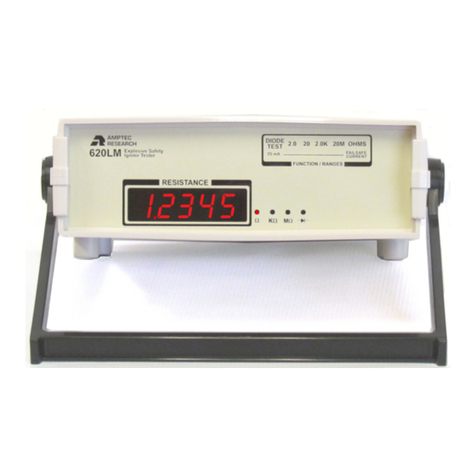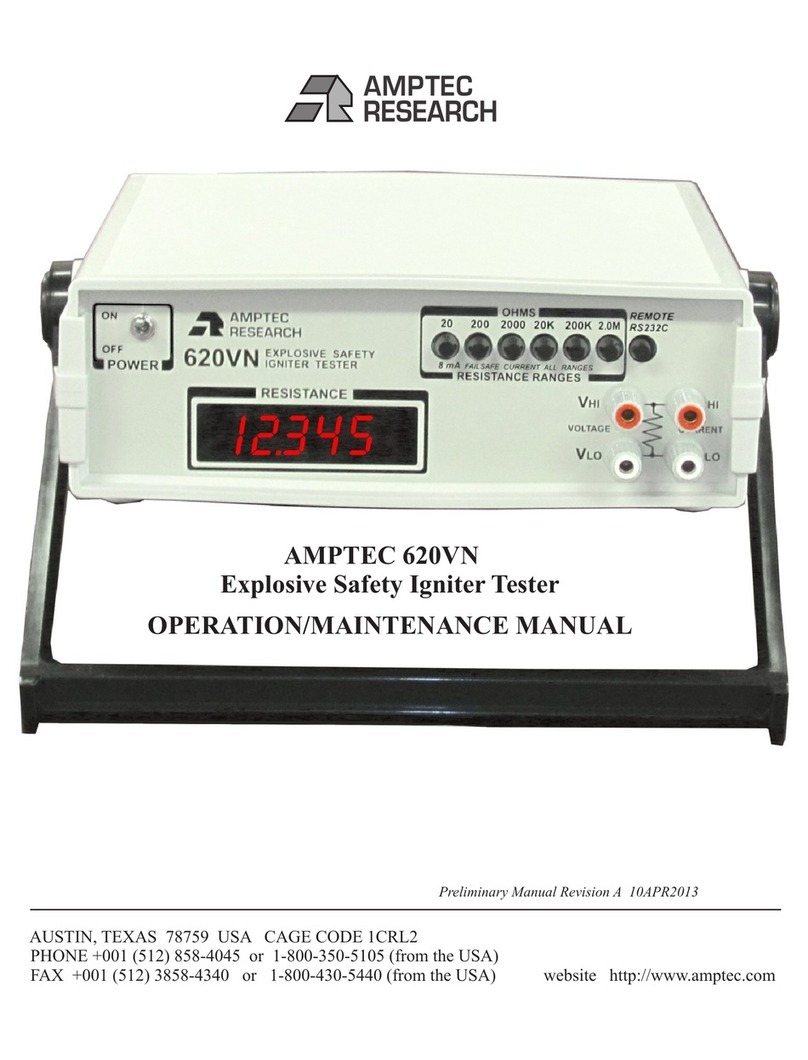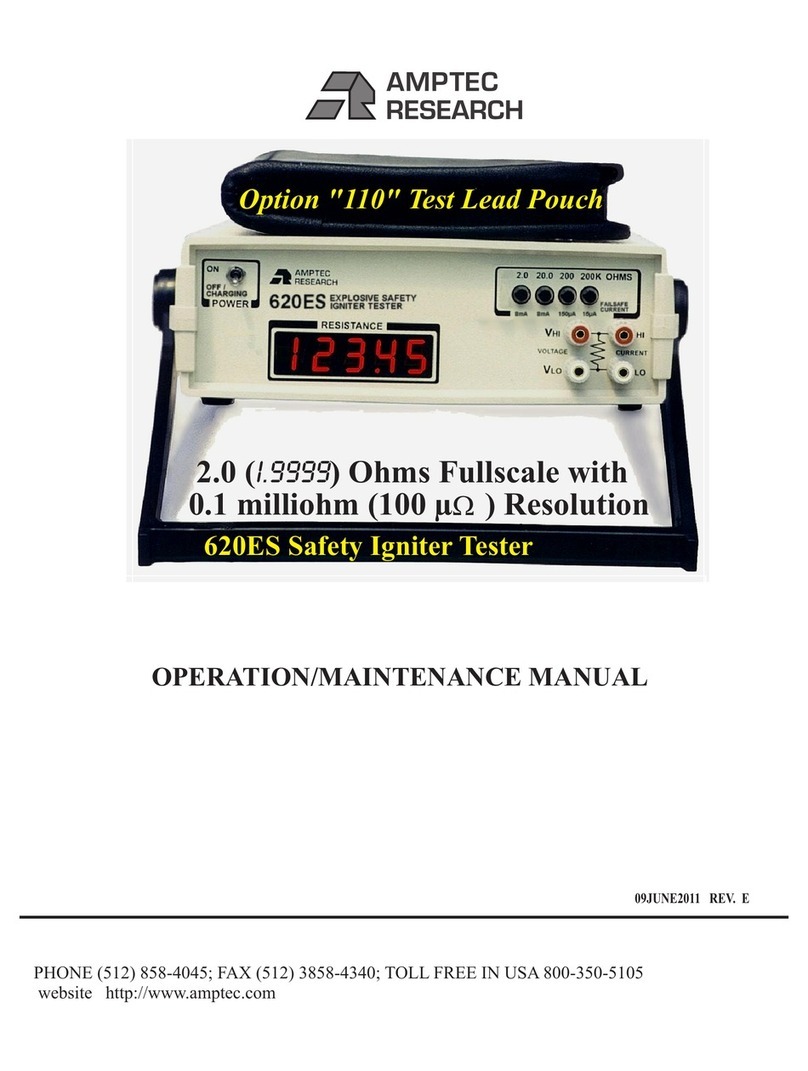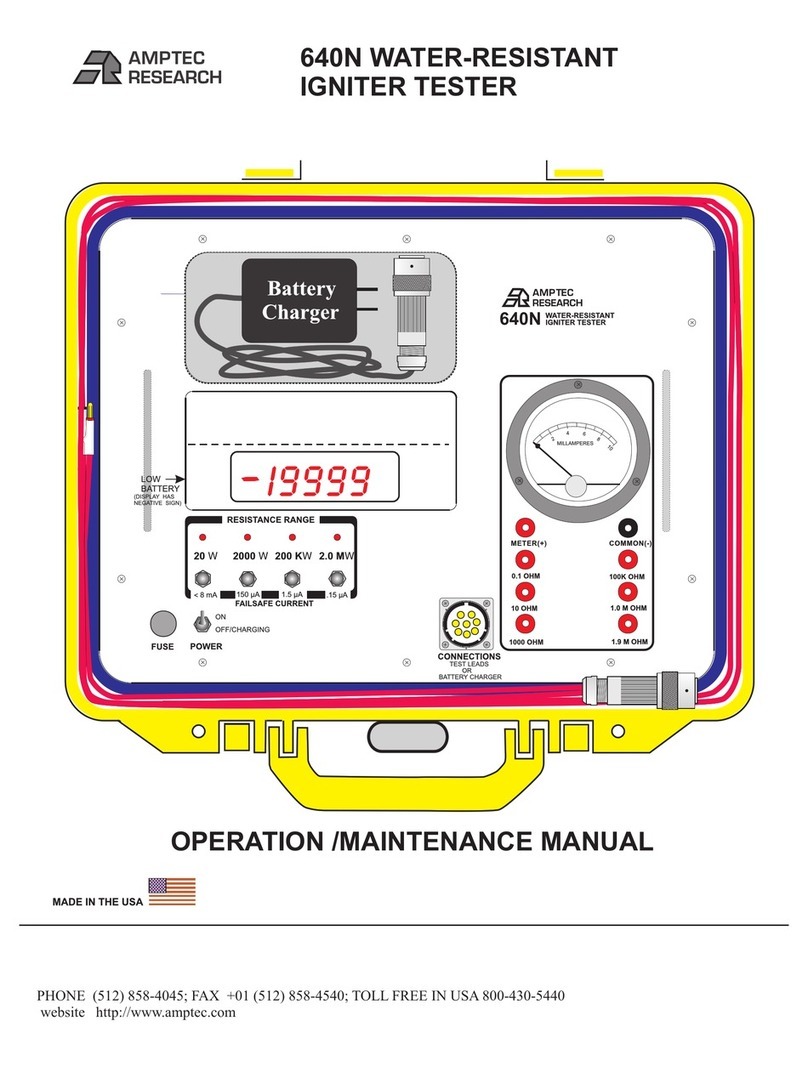
A-1. Introduction to the AMPTEC 620A-4R
The AMPTEC 620A and the 630 Series Igniter
Testers/Failsafe Ohmmeters are becoming the
standard in the Safety Igniter Circuit Test
industry, and are designed to provide extremely
safe and reliable resistance testing of explosive
or volatile devices. Safety Approvals from
various Safety Boards include, the U.S. Air
Force ( 620A-4) for generic use on Non-Nuclear
munitions and the US NAVAL ORDNANCE
CENTER (630AN and other versions pending).
Some of the devices the 620A 4R Failsafe
Ohmmeter may be used on include: fuses,
squibs, igniters, explosive bolts, rocket motor
squibs, automobile air-bag initiators and many
others.
The AMPTEC 620A 4R is a 4-wire failsafe
digital ohmmeter which has been designed to
reliably use very low test currents for its
resistance measurement. Failsafe Output
Circuitry proprietary to AMPTEC RESEARCH
ensures that test current levels do not exceed the
specified "failsafe current" even in a worst-case
component failure situation. The failsafe feature
is tested in every instrument before shipment.
Thru out this manual reference is made to both
620A-4 and 620A-4R (ruggedized) essentially
water resistant packaging being the major
difference.
The 620A-4 and the newer 620A-4R represent
the latest in ultra-safe Igniter Tester
measurements. The 620A 4R uses the same main
printed circuit board (PCB) as the AMPTEC
620A Igniter Tester. The 620A 4R has been
made water-resistant and has many features
which make it useful in a variety of applications.
Please check the last chapter of this manual for
addendums that may apply to any differences
between new 620A 4Rs and 620A-4 Igniter
Testers. Should the rechargeable batteries reach
a low charge level a negative sign will appear on
the display. The 620A 4R has a battery
monitoring circuit that indicates it is time to
plug in the battery charger.
A-2. Receiving, Unpacking, and Initial
Inspection
Should the AMPTEC shipping box appear
damaged upon arrival, request that the carrier's
agent (i.e. UPS) be present when the unit is
unpacked. If the 620A 4R appears damaged, the
carrier's agent should authorize repairs before
the unit is returned to the factory. Even if the
instrument appears undamaged, it may have
suffered internal damage in transit that may not
be evident until the unit is operated or tested to
verify conformance with its specifications. You
may refer to the Functional Test section of
Section D of this manual to help identify the
problem (i.e Test leads etc.)
The 620A 4R has a set of test
resistors built-in the
Functional Test Section that
can quickly help the user
figure out where the
problem is most of the time.
If the unit fails to operate or
fails to meet the performance specifications of
Section B, notify the carrier's agent and the
nearest AMPTEC Sales Office. Retain the
shipping carton for the carrier's inspection. DO
NOT return equipment to AMPTEC
RESEARCH or any of its sales offices without
first obtaining an (RMA) Return Material
Authorization number. We need to know who to
contact and how to contact (i.e. phone number
and FAX number) in order to properly
coordinate the return of the repaired AMPTEC
product.
By calling AMPTEC RESEARCH first, prior
to just returning the 620A 4R, we can often
troubleshoot (based on the symptoms you
describe) and identify the problem over the
phone (i.e battery loose in the battery holder).
We may possibly be able to fix the problem over
the phone and prevent you from having to return
the unit to AMPTEC for repair.
R M A
SECTION A - RECEIVING AND INITIAL INSPECTION
































